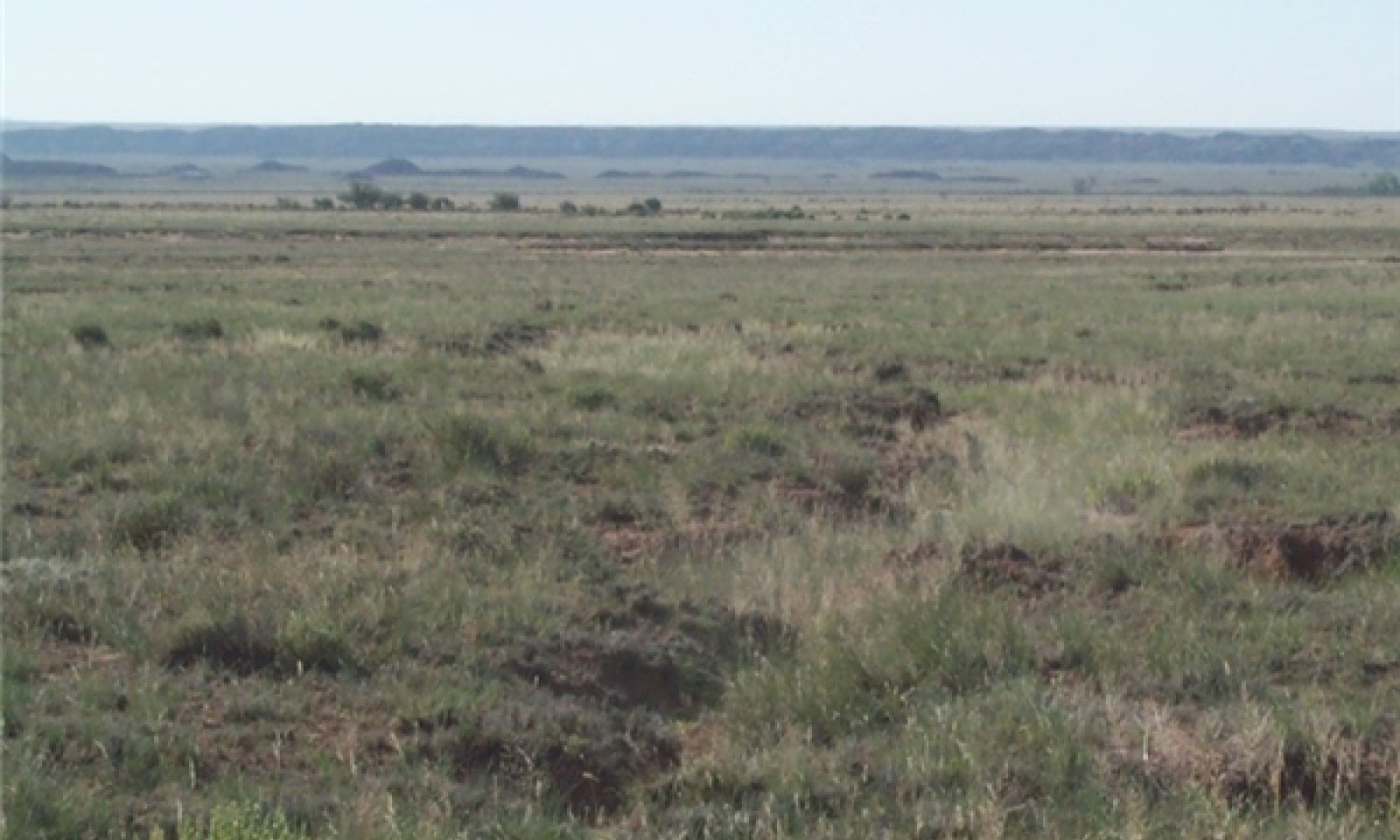

Natural Resources
Conservation Service
Ecological site R035XB216AZ
Sandy Wash 6-10" p.z.
Accessed: 12/07/2025
General information
Provisional. A provisional ecological site description has undergone quality control and quality assurance review. It contains a working state and transition model and enough information to identify the ecological site.
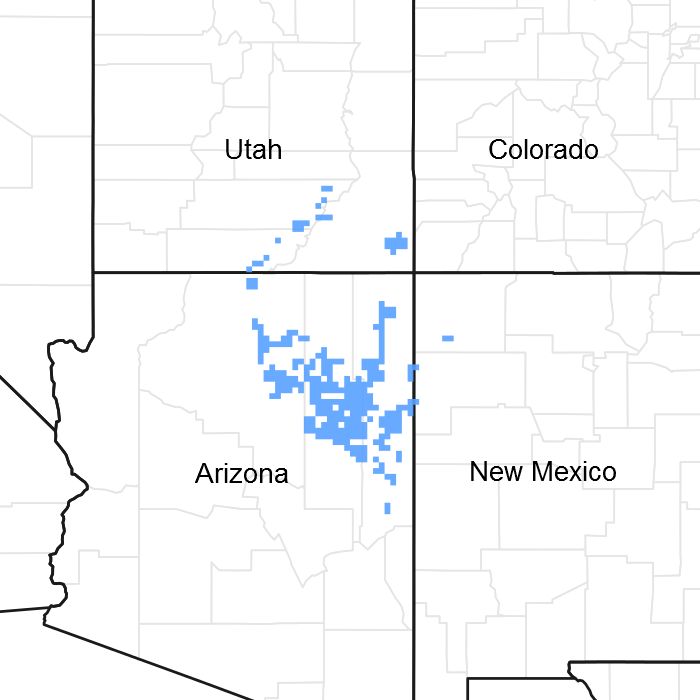
Figure 1. Mapped extent
Areas shown in blue indicate the maximum mapped extent of this ecological site. Other ecological sites likely occur within the highlighted areas. It is also possible for this ecological site to occur outside of highlighted areas if detailed soil survey has not been completed or recently updated.
MLRA notes
Major Land Resource Area (MLRA): 035X–Colorado Plateau
This ecological site occurs in Common Resource Area 35.2 - the Colorado Plateau Shrub – Grasslands
Elevations range from 3800-5800 feet and precipitation averages 6 to 10 inches per year. Vegetation includes shadscale, fourwing saltbush, Mormon tea, blackbrush, Indian ricegrass, galleta, blue grama, and black grama. The soil temperature regime is mesic and the soil moisture regime is typic aridic. This unit occurs within the Colorado Plateau Physiographic Province and is characterized by a sequence of flat to gently dipping sedimentary rocks eroded into plateaus, valleys and deep canyons. Sedimentary rock classes dominate the plateau with volcanic fields occurring for the most part near its margin.
Associated sites
| R035XB211AZ |
Loamy Wash 6-10" p.z. Saline-Sodic Saline bottom sites occuring in areas adjacent to the floodplain, playas and stream terraces. |
|---|
Similar sites
| R035XB209AZ |
Loamy Wash 6-10" p.z. Deep sites on floodplains with loamy textures. |
|---|
Table 1. Dominant plant species
| Tree |
Not specified |
|---|---|
| Shrub |
(1) Atriplex canescens |
| Herbaceous |
(1) Pascopyrum smithii |
Physiographic features
This site is in a bottom position on stream terraces, floodplains and drainageway channels. It benefits significantly from occasional over bank flooding and run-in moisture from adjacent uplands. Slopes are less than 2%, but can range to 4%.
Table 2. Representative physiographic features
| Landforms |
(1)
Alluvial fan
(2) Flood plain (3) Stream terrace |
|---|---|
| Flooding duration | Very brief (4 to 48 hours) to brief (2 to 7 days) |
| Flooding frequency | Occasional to frequent |
| Elevation | 1,158 – 1,768 m |
| Slope | 0 – 4% |
| Aspect | Aspect is not a significant factor |
Climatic features
Average annual precipitation ranges from 6 to 10 inches. About 50% -60% of the annual precipitation is received as rainfall and comes between July and September. The remaining moisture comes as snow during the winter. Long periods with little or no effective moisture are relatively common.
Mean temperatures for the hottest month (Jul) is 72 degrees F; for the coldest month (Jan) is 32 degrees F. Extreme temperatures of 105 degrees F and -26 degrees F have been recorded.
Cool season plants begin growth in early spring and mature in the early summer. Warm season plants take advantage of the summer rains and grow and retain their nutrition from July through September.
Table 3. Representative climatic features
| Frost-free period (average) | 181 days |
|---|---|
| Freeze-free period (average) | 207 days |
| Precipitation total (average) | 254 mm |
Figure 2. Monthly precipitation range
Figure 3. Monthly average minimum and maximum temperature
Influencing water features
This site benefits significantly from occasional over bank flooding and run-in moisture from adjacent uplands.
Soil features
Soils on this site are deep and well drained.
Textures in the profiles are mixed and stratified with thin horizons of loamy textures. The surface texture ranges from course sand to course sandy loam.
The substratum is silt loam, sand, sandy clay loam, loamy sand or silty clay loam.
Permeability is rapid and soil reaction is moderately alkaline. Runoff is slow and water erosion hazard is moderate to severe when this site is flooding.
Typical taxonomic units include:
Navajo County Central (AZ633) Soil Map Unit's- 50 Typic Torrifluvents, 70 Trail;
Apache County Central (AZ635) Soil Map Unit's -SD-Sandy Alluvial Land;
Little Colorado River Area (AZ707)Soil Map Unit's - 17 & 18 Ives;
Chinle Area (AZ713) Soil Map Unit - 2 Naha;
Hopi (AZ714) Soil Map Unit - 9 Ives;
Fort Defiance Area (AZ715) Soil Map Unit's - 40 & 134 Ives, 73 & 122 Trail;
Shiprock (NM717) Soil Map Unit's - 147, 160, 165 & 501 Escavada, 509 Trail
Glen Canyon Area (UT689) Soil Map Unit's - 23 Razito.
Table 4. Representative soil features
| Parent material |
(1)
Alluvium
–
sandstone and shale
|
|---|---|
| Surface texture |
(1) Coarse sand (2) Sand (3) Coarse sandy loam |
| Family particle size |
(1) Loamy |
| Drainage class | Moderately well drained to well drained |
| Permeability class | Moderate to rapid |
| Soil depth | 102 – 152 cm |
| Surface fragment cover <=3" | 0 – 15% |
| Available water capacity (0-101.6cm) |
1.27 – 5.08 cm |
| Electrical conductivity (0-101.6cm) |
0 – 2 mmhos/cm |
| Sodium adsorption ratio (0-101.6cm) |
0 – 5 |
| Soil reaction (1:1 water) (0-101.6cm) |
7.9 – 8.4 |
| Subsurface fragment volume <=3" (Depth not specified) |
0 – 10% |
Ecological dynamics
An ecological site is not a precise assemblage of species for which the proportions are the same from place to place or from year to year. In all plant communities, variability is apparent in productivity and occurrence of individual species. Spatial boundaries of the communities; however, can be recognized by characteristic patterns of species composition, association, and community structure. The historic climax plant community for this ecological site has been described by sampling relict or relatively undisturbed sites and/or reviewing historic records. The historic climax plant community is the plant community that evolved over time with the soil forming process and long term changes in climatic conditions of the area. It is the plant community that was best adapted to the unique combination of environmental factors associated with the site.
Natural disturbances, such as drought, fire, grazing of native fauna, and insects, are inherent in the development and maintenance of these plant communities. The effects of these disturbances are part of the range of characteristics of the ecological site. Fluctuations in plant community structure and function caused by the effects of natural disturbances help establish the boundaries and characteristics of an ecological site. They are accounted for as part of the range of characteristics of the ecological site. Recognizable plant community phases are identified in the reference state of the ecological site. Some sites may have a small range of variation, while others have a large range. Some plant community phases may exist for long periods of time, while others may only occur for a couple of years after a disturbance.
Deterioration of the plant community, hydrology, or soil site stability on an ecological site can result in crossing a threshold or potentially irreversible boundary to another state, or equilibrium. This can occur as a result of the loss of soil surface through erosion, the loss of the stability of the site due to disturbances that cause active erosion on the site, increases in the amounts and/or patterns or runoff from rainstorms, changes in availability of surface and subsurface water, significant changes in plant structural and functional types, or the introduction of non-native species. When these thresholds are crossed, the potential of the ecological site to return to the historic climax plant community can be lost, or restoration will require significant inputs . There may be multiple states possible for an ecological site, determined by the type and or severity of disturbance.
The known states and transition pathways for this ecological site are described in the state and transition model. Within each state, there may be one or more known plant community phases. These community phases describe the different plant community that can be recognized and mapped across this ecological site. The state and transition model is intended to help land users recognize the current plant community on the ecological site, and the management options for improving the plant community to the desired plant community.
Plant production information in this site description is standardized to the annual production on an air-dry weight basis in near normal rainfall years.
Disturbances to this site include: irrigation for farming (resulting in a major drawdown of the water table), unmanaged grazing by various ungulates, natural and artificial changes in the river channel, and drought; and possible increase in salinity due to release of irrigation water. The plant communities described were determined by study of relict areas, if available, or areas protected from excessive disturbances. Trends in plant communities going from unmanaged grazed areas to managed grazed areas, seasonal use areas and historical accounts have also been used.
State and transition model

Figure 4. State and Transition Model - R035XB216AZ
More interactive model formats are also available.
View Interactive Models
More interactive model formats are also available.
View Interactive Models
Click on state and transition labels to scroll to the respective text
State 1 submodel, plant communities
State 2 submodel, plant communities
State 3 submodel, plant communities
State 1
Reference State
The reference state includes the Historic Climax Plant Community and is a grassland dominated by perennial grasses, such as western wheatgrass, Indian ricegrass, alkali sacaton, squirreltail and galleta. Occasional over bank flooding and additional run-in moisture from adjacent uplands lends to high grass production. Shrubs can occur across the site along drainageways and areas of discontinuous channels. The occasional cottonwood may be present where a seep or a higher water table due to shallow bedrock depth occurs.
Community 1.1
Western wheatgrass - Indian ricegrass/ Fourwing saltbush (HCPC)

Figure 5. Sandy Wash 6-10" p.z. Grassland
This grassland dominated plant community has a mixture of both cool and warm season grasses, with scattered shrubs. Dominant grasses are western wheatgrass and Indian ricegrass with scattered alkali sacaton and squirreltail. Common shrubs that occur across the site along drainageways are fourwing saltbush, rubber rabbitbrush and Bigelow sagebrush. The occasional cottonwood may be present where a seep or a higher water table due to shallow bedrock depth occurs. Plant species most likely to invade or increase on this site when it deteriorates are salt cedar, rabbitbrush, and russian thistle. As erosion occurs, the benefits of over bank flooding are significantly reduced and results in a decline of grass cover and an increase in shrub species.
Figure 6. Annual production by plant type (representative values) or group (midpoint values)
Table 5. Annual production by plant type
| Plant type | Low (kg/hectare) |
Representative value (kg/hectare) |
High (kg/hectare) |
|---|---|---|---|
| Grass/Grasslike | 504 | 757 | 1009 |
| Shrub/Vine | 101 | 151 | 202 |
| Forb | 50 | 78 | 101 |
| Tree | – | – | 11 |
| Total | 655 | 986 | 1323 |
Table 6. Ground cover
| Tree foliar cover | 0% |
|---|---|
| Shrub/vine/liana foliar cover | 3-10% |
| Grass/grasslike foliar cover | 8-30% |
| Forb foliar cover | 1-5% |
| Non-vascular plants | 0% |
| Biological crusts | 0% |
| Litter | 15-45% |
| Surface fragments >0.25" and <=3" | 0-5% |
| Surface fragments >3" | 0-1% |
| Bedrock | 0% |
| Water | 0% |
| Bare ground | 20-40% |
Table 7. Canopy structure (% cover)
| Height Above Ground (m) | Tree | Shrub/Vine | Grass/ Grasslike |
Forb |
|---|---|---|---|---|
| <0.15 | – | – | 0-3% | 0-1% |
| >0.15 <= 0.3 | – | 0-2% | 0-15% | 0-1% |
| >0.3 <= 0.6 | – | 0-4% | 0-10% | 0-1% |
| >0.6 <= 1.4 | – | 0-2% | 0-1% | – |
| >1.4 <= 4 | – | – | – | – |
| >4 <= 12 | – | – | – | – |
| >12 <= 24 | – | – | – | – |
| >24 <= 37 | – | – | – | – |
| >37 | – | – | – | – |
Figure 7. Plant community growth curve (percent production by month). AZ3521, 35.2 6-10" p.z. all sites. Growth begins in the spring and continues through the summer. Most growth in this CRA occurs in the spring using stored winter moisture..
| Jan | Feb | Mar | Apr | May | Jun | Jul | Aug | Sep | Oct | Nov | Dec |
|---|---|---|---|---|---|---|---|---|---|---|---|
| J | F | M | A | M | J | J | A | S | O | N | D |
| 0 | 1 | 9 | 20 | 27 | 14 | 10 | 11 | 5 | 3 | 0 | 0 |
Community 1.2
Alkali sacaton-Indian ricegrass/ Fourwing saltbush-Rabbitbrush
This site is a grassland community with an increase of shrub species. Dominant grasses in this plant community are alkali sacaton, Indian ricegrass and galleta. Western wheatgrass may or not be present. There is an increase of large shrubs like fourwing saltbush, rabbitbrush and scattered half shrubs. Non-native annuals are present, but do not alter the function and processes of this plant community phase. This site can result from drought, unmanaged grazing and a lack of fire or a combination of disturbances.
Pathway 1.1a
Community 1.1 to 1.2
Unmanaged grazing, drought, removal of natural fire.
Pathway 1.2a
Community 1.2 to 1.1
Managed grazing, reintroduction of fire to remove shrubs, improved climatic conditions/precipitation.
State 2
Native/ Invaded State
This plant communty is a shrubland with sparse perennial grasses and an increase in native and non-native annuals.
Community 2.1
Rubber rabbitbrush - Fourwing Saltbush

Figure 8. Sandy Wash - Shrubs, rarely flooded
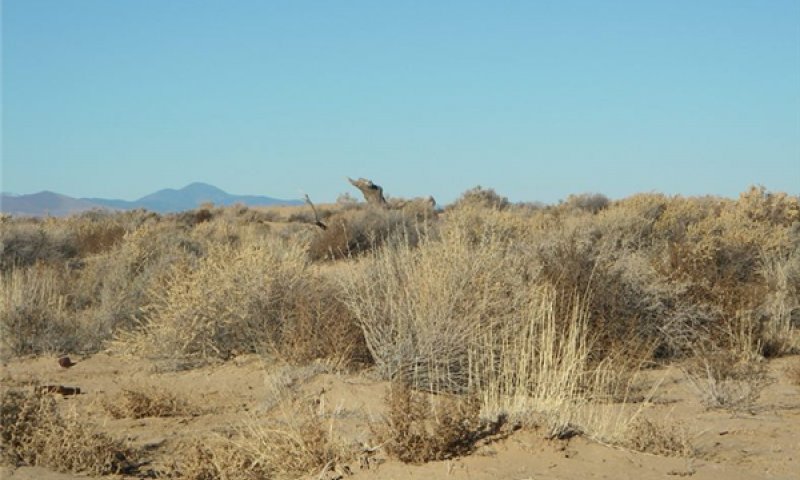
Figure 9. Sandy Wash - Shrubs, rarely flooded
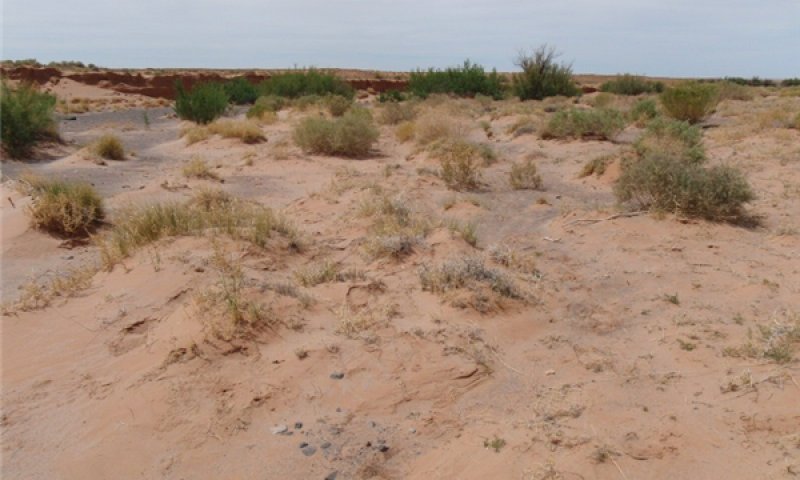
Figure 10. Sandy Wash - Shrubs, occasionally flooded
This plant communty is a shrubland that includes rubber rabbitbrush and fourwing saltbush with sparse perennial grasses. A loss of biotic integrity and hydrologic function thru the loss of perennial grass cover and incised channels. The site begins to dry and shrubs increase, especially deep rooted shrubs. Bare ground increases and allows for accelerated wind and water erosion, promoting deposition and sedimentation.
State 3
Eroded/ Invasive Overstory State
This plant community is dominated by tamarisk and/or Russian olive as the overstory with an understory of shrubs and annuals with sparse perennial grasses.
Community 3.1
Tamarisk/ Rubber rabbitbrush - Fourwing saltbush

Figure 11. Sandy Wash - Tamarisk
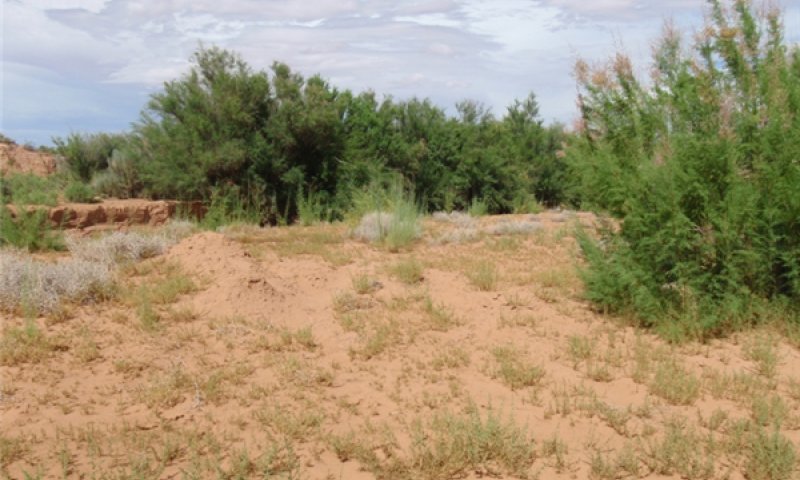
Figure 12. Sandy Wash - Tamarisk
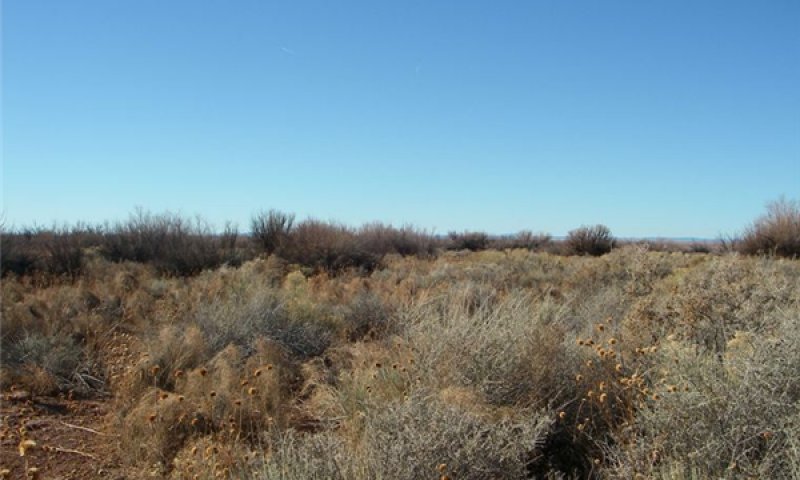
Figure 13. Sandy Wash - Tamarisk with shrubs
This plant community is dominated by tamarisk and/or Russian olive as the overstory. The understory is dominated by shrubs such as rubber rabbitbrush and fourwing saltbush with only patches of perennial grasses. Native and non-native annuals are also present in the understory. This state is caused by heavy disturbance along the channel such as changes in stream flow and width, drought, and unmanaged grazing. Unmanaged grazing on site and on adjacent uplands produces increased surface runoff and sediments. Channelized flows accelerate channel scour, gully erosion and creates abandoned floodplains. Deep channels form and promote the establishment of exotic tree species thru seed sources from adjacent washes and rivers. The site has the potential to burn and promote further Tamarisk invasion.
Transition T1A
State 1 to 2
Changes in the site's hydrology due to disturbances such as unmanaged grazing or altering the floodplain thru road building, farming, channel diversion. This reduces the benefit of overland flow that promotes productive grasslands. A loss of perennial grass cover allows for the increase of shrub species, especially deeper rooted shrubs.
Transition T1B
State 1 to 3
Continuous unmanaged grazing on this site and adjacent uplands, excessive surface runoff and sediments, channelized flows accelerate channel scour promote gully erosion and creates abandoned floodplains. Deep channels form and promote the establishment of exotic tree species thru seed sources from disturbed areas.
Restoration pathway R2A
State 2 to 1
Managed grazing, reseeding or seed source for perennial grasses, brush treatment for shrubs, possibly treatments to control channel and gully erosion and to reestablish the flooding regime.
Transition T2A
State 2 to 3
Unmanaged grazing, increased surface runoff and sediments, channelized flows accelerate channel scour, gully erosion and create abandoned floodplains. Deep channels form and promote the establishment of exotic tree species thru seed sources and frequent flooding.
Restoration pathway R3A
State 3 to 2
Managed grazing including adjacent uplands, reseeding or seed source for perennial grass recovery, brush/herbicide treatment for invasive trees and shrubs, mechanical treatments to control channel and gully erosion; reestablishment of the flooding regime.
Additional community tables
Table 8. Community 1.1 plant community composition
| Group | Common name | Symbol | Scientific name | Annual production (kg/hectare) | Foliar cover (%) | |
|---|---|---|---|---|---|---|
|
Grass/Grasslike
|
||||||
| 1 | Dominant Grasses | 404–857 | ||||
| western wheatgrass | PASM | Pascopyrum smithii | 196–364 | – | ||
| Indian ricegrass | ACHY | Achnatherum hymenoides | 84–196 | – | ||
| alkali sacaton | SPAI | Sporobolus airoides | 56–168 | – | ||
| squirreltail | ELELE | Elymus elymoides ssp. elymoides | 56–140 | – | ||
| 2 | Other Grasses | 101–174 | ||||
| sand dropseed | SPCR | Sporobolus cryptandrus | 0–56 | – | ||
| James' galleta | PLJA | Pleuraphis jamesii | 0–56 | – | ||
| spike dropseed | SPCO4 | Sporobolus contractus | 0–28 | – | ||
| mesa dropseed | SPFL2 | Sporobolus flexuosus | 0–28 | – | ||
| giant dropseed | SPGI | Sporobolus giganteus | 0–28 | – | ||
| threeawn | ARIST | Aristida | 0–28 | – | ||
| Grass, annual | 2GA | Grass, annual | 0–22 | – | ||
| Grass, perennial | 2GP | Grass, perennial | 0–22 | – | ||
|
Forb
|
||||||
| 3 | Forbs | 50–101 | ||||
| Forb, perennial | 2FP | Forb, perennial | 28–56 | – | ||
| Forb, annual | 2FA | Forb, annual | 22–45 | – | ||
| milkweed | ASCLE | Asclepias | 0–11 | – | ||
| mustard | BRASS2 | Brassica | 0–11 | – | ||
| whitemargin sandmat | CHAL11 | Chamaesyce albomarginata | 0–11 | – | ||
| rose heath | CHER2 | Chaetopappa ericoides | 0–11 | – | ||
| mealy goosefoot | CHIN2 | Chenopodium incanum | 0–11 | – | ||
| Wright's bird's beak | COWR2 | Cordylanthus wrightii | 0–11 | – | ||
| springparsley | CYMOP2 | Cymopterus | 0–11 | – | ||
| western tansymustard | DEPI | Descurainia pinnata | 0–11 | – | ||
| hoary tansyaster | MACA2 | Machaeranthera canescens | 0–11 | – | ||
| cleftleaf wildheliotrope | PHCR | Phacelia crenulata | 0–11 | – | ||
| woolly plantain | PLPA2 | Plantago patagonica | 0–11 | – | ||
| globemallow | SPHAE | Sphaeralcea | 0–11 | – | ||
|
Shrub/Vine
|
||||||
| 4 | Shrubs | 101–219 | ||||
| fourwing saltbush | ATCA2 | Atriplex canescens | 56–112 | – | ||
| rubber rabbitbrush | ERNA10 | Ericameria nauseosa | 11–56 | – | ||
| rubber rabbitbrush | ERNAB2 | Ericameria nauseosa ssp. nauseosa var. bigelovii | 0–34 | – | ||
| broom snakeweed | GUSA2 | Gutierrezia sarothrae | 0–34 | – | ||
| Bigelow sage | ARBI3 | Artemisia bigelovii | 0–34 | – | ||
| spineless horsebrush | TECA2 | Tetradymia canescens | 0–22 | – | ||
| pricklypear | OPUNT | Opuntia | 0–22 | – | ||
| stretchberry | FOPUP | Forestiera pubescens var. pubescens | 0–22 | – | ||
| greasewood | SAVE4 | Sarcobatus vermiculatus | 0–11 | – | ||
| narrowleaf yucca | YUAN2 | Yucca angustissima | 0–11 | – | ||
| shadscale saltbush | ATCO | Atriplex confertifolia | 0–11 | – | ||
| Subshrub (<.5m) | 2SUBS | Subshrub (<.5m) | 0–11 | – | ||
|
Tree
|
||||||
| 5 | Trees | 0–11 | ||||
| Fremont cottonwood | POFR2 | Populus fremontii | 0–11 | – | ||
Interpretations
Animal community
This site is suitable for yearlong grazing by either cows and calves or stocker cattle, and is easily traversed by all classes of livestock. Planned grazing systems adapt very well to use of this site. When stream bottoms and flood plains are in flood stage, this site can be very hazardous to livestock.
This site has a fair diversity in the plant community. As retreogression occurs the brush and tree species increase dramatically. These thicket areas are important nesting sites for many bird species.
Recreational uses
This site is characterized by dry bottoms and flood plains. These bottom and flood plain areas break the monotony of the surrounding rolling plains and are aesthetically very pleasing.
Winters are cold; however, relatively mild summers make the site attractive for recreational use. Springtime is usually very windy.
Birdwatching, hunting and horseback riding are the main activities.
Supporting information
Type locality
| Location 1: Navajo County, AZ | |
|---|---|
| Township/Range/Section | T18N R23E S18 |
| General legal description | Near Carrizo Butte along Puerco River. |
Other references
Han, G., G. Zhang, and Y. Dong. 2007. A model for the active origin and development of source-bordering dunefields on a semiarid fluvial plane: A case study from the Xiliaohe Plain, Northeast China. Geomorphology 86: 512-524.
Cooper, D.J., J.S. Sanderson, D.I. Stannard, and D.P. Groeneveld. 2006. Effects of long-term water table drawdown on evapotranspiration and vegetation in an arid region phreatophyte community. Journal of Hydrology 325: 21-34.
Pataki, D.E., S.E. Bush, P. Gardner, D.K. Solomon, and J.R. Ehleringer. 2005. Ecohydrology in a Colorado River riparian forest: implications for the decline of Populus fremontii. Ecological Applications 15(3): 1009-1018.
Cleverly, J.R., S.D. Smith, A.Sala and D.A. Devitt. 1997. Invasive capacity of Tamarix ramosissima in a Mojave Desert floodplain: the role of drought. Oecologia 111: 12-18.
Updates and revisions for this ESD were conducted as part of a 2007-2012 Interagency Technical Assistance Agreement between the Bureau of Indian Affairs–Navajo Region and the NRCS-Arizona.
Contributors
Jennifer Puttere
Karlynn Huling
Ken Gishi
Larry D. Ellicott
Rangeland health reference sheet
Interpreting Indicators of Rangeland Health is a qualitative assessment protocol used to determine ecosystem condition based on benchmark characteristics described in the Reference Sheet. A suite of 17 (or more) indicators are typically considered in an assessment. The ecological site(s) representative of an assessment location must be known prior to applying the protocol and must be verified based on soils and climate. Current plant community cannot be used to identify the ecological site.
| Author(s)/participant(s) | Jennifer Puttere, Kenneth Gishi |
|---|---|
| Contact for lead author | State Rangeland Management Specialist, NRCS-Arizona State Office, Phoenix, AZ |
| Date | 03/14/2011 |
| Approved by | |
| Approval date | |
| Composition (Indicators 10 and 12) based on | Annual Production |
Indicators
-
Number and extent of rills:
Very few expected. Some rill formation is possible due to loamy surface textures, moderate permeability, and occasional flooding. -
Presence of water flow patterns:
Few expected. No more than 3 or 4 on a 150 foot transect. Water flow patterns are common due to moderate permeability of the soils and occasional flooding. Water flow patterns should not be connected. -
Number and height of erosional pedestals or terracettes:
Very Few expected due to occasional flooding. -
Bare ground from Ecological Site Description or other studies (rock, litter, lichen, moss, plant canopy are not bare ground):
Bare ground ranges from 20-40% on a 150 foot transect. This site should have a relatively low percentage of bare ground because it has the potential for high plant productivity. -
Number of gullies and erosion associated with gullies:
Few gullies may form due to the occasional flooding, but should be stable with vegetation and have no active signs of erosion. -
Extent of wind scoured, blowouts and/or depositional areas:
Few scattered areas of sand deposition throughout the site; few to no wind-scoured areas and blowouts. Sedimentation is a natural process that occurs on this site when well vegetated with herbaceous cover. -
Amount of litter movement (describe size and distance expected to travel):
Herbaceous litter will travel a short distance and may be under shrub canopies; woody litter for the most part will either remain in place or travel a short distance downslope. If the site floods, there will be evidence of litter traveling large distances evidenced by swirls of herbaceous litter and woody litter far from its original source. -
Soil surface (top few mm) resistance to erosion (stability values are averages - most sites will show a range of values):
Soil surface textures range from sand to course sandy loam. Coarse fragments are not as common. When well vegetated and not subjected to severe flood events, soils have moderate resistance to water erosion and a moderate resistance to wind erosion. Stability ranges from 3 to 5 throughout the site. -
Soil surface structure and SOM content (include type of structure and A-horizon color and thickness):
Single grain, granular or platy surface structure, depending on the amount of organic matter binding the soil together; single grain if sand is covering the surface. -
Effect of community phase composition (relative proportion of different functional groups) and spatial distribution on infiltration and runoff:
Areas with continuous native grass and shrubs can be expected to have low amounts of runoff with better infiltration; areas with dense shrubs can be expected to have moderate amounts of runoff and lower amounts or slower infiltration; bare ground and wind-scoured areas will have high amounts of runoff and slow to almost no infiltration. -
Presence and thickness of compaction layer (usually none; describe soil profile features which may be mistaken for compaction on this site):
No compaction layer, due to coarseness of the soils. There can be an occasional layer of stratafied finer textures below the surface horizons. These are not compaction layes. -
Functional/Structural Groups (list in order of descending dominance by above-ground annual-production or live foliar cover using symbols: >>, >, = to indicate much greater than, greater than, and equal to):
Dominant:
Cool season grasses > warm season grasses >Sub-dominant:
Other:
Large shrubs > Half shrubs > forbsAdditional:
-
Amount of plant mortality and decadence (include which functional groups are expected to show mortality or decadence):
All plant functional groups are adapted to survival in all but the most severe droughts. -
Average percent litter cover (%) and depth ( in):
Mostly herbaceous litter with some woody litter. Litter amounts increase during the first few years of drought, then decrease in later years. -
Expected annual annual-production (this is TOTAL above-ground annual-production, not just forage annual-production):
Expected production of 800 - 1000 pounds per acre in a average of year of precipitation. -
Potential invasive (including noxious) species (native and non-native). List species which BOTH characterize degraded states and have the potential to become a dominant or co-dominant species on the ecological site if their future establishment and growth is not actively controlled by management interventions. Species that become dominant for only one to several years (e.g., short-term response to drought or wildfire) are not invasive plants. Note that unlike other indicators, we are describing what is NOT expected in the reference state for the ecological site:
Rubber rabbitbrush, camelthorn, Russian thistle, saltcedar (tamarisk) and Russian Olive. -
Perennial plant reproductive capability:
All plants native to this site are adapted and are capable of producing seeds, stolons and rhizomes in all but the most severe drought.
Print Options
Sections
Font
Other
The Ecosystem Dynamics Interpretive Tool is an information system framework developed by the USDA-ARS Jornada Experimental Range, USDA Natural Resources Conservation Service, and New Mexico State University.
Click on box and path labels to scroll to the respective text.